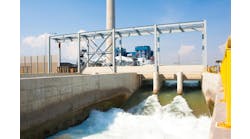Figure 1. Bubbles generated by fluidic oscillator (top) are
20-μ dia. while conventional fine bubbles from same ceramic
diffuser are 1–3 mm. dia.
Source: University of Sheffield.
"If the promise of microbubbles holds, then it is a 'game changer' for gas/liquid systems, with the potential to cut out huge costs," he contends.
The generator relies on fluid oscillation and has no moving parts and low maintenance, notes Zimmerman. It creates a series of pulses at frequencies of 1–100 Hz that force gas through a microporous diffuser, rapidly forming bubbles that act much like bullets being shot from a gun barrel, he explains. "They don't stop at the pore, like conventional bubbles, which grow slowly larger . . . So we get much smaller bubbles and pay less 'energy' cost to make them."
He already has thought about scaling up the technology. "We want [fluidic oscillators] as small as reasonably possible to get the highest frequencies of oscillation available, and more of them to deal with the large volumetric flow rates. We can make the small fluidic oscillators for about $8 of materials, so cost is not the issue," he notes.
The researchers have developed an airlift loop bioreactor with such a generator. (An article about the design of the bioreactor won the Moulton Medal of the U.K.'s Institution of Chemical Engineers as the best paper published in any I.Chem.E. journal during 2009.) They already are evaluating a variety of applications. For instance, they are working with the local water company, Yorkshire Water, on wastewater aeration and water purification. ". . . From pilot trials, estimates are that we can reduce the energy consumption by conservatively 20% and possibly as much as 80%. In water purification, we are arranging a trial on solids removal that could reduce the energy usage by 90%–95%," notes Zimmerman.
Plans are to refit one of two wastewater-aeration sequencing batch reactors at a site with spare capacity to assess reliability and electricity savings. "Optimistically, we will be fitting this spring and will have meaningful results by autumn," he says. "So, this winter we could have our first customers in the U.K. water sector."
Efforts also are underway with steelmaker Corus to transfer CO2 in exhaust gas to water to grow oil-rich microalgae for biofuels. The microbubbles make CO2 dissolve faster and also remove O2, which is toxic to the algae.
Opportunities in chemical processing abound, he believes. "I have imagined a lot of potential applications for microbubbles that exploit more rapid dosing, stripping, heat transfer, flotation and suspension effects, and amount of interface area for supporting heterogeneous reactions or nanoparticle activities. Reactive separations where they never have been used before . . . I would like to exhort [chemical engineers and biotechnologists] to think of how they might make use of energy-efficient microbubbles in places where they have never been used before."
A company specializing in commercializing university research, fusionIP, Sheffield, has rights to market the technology.

